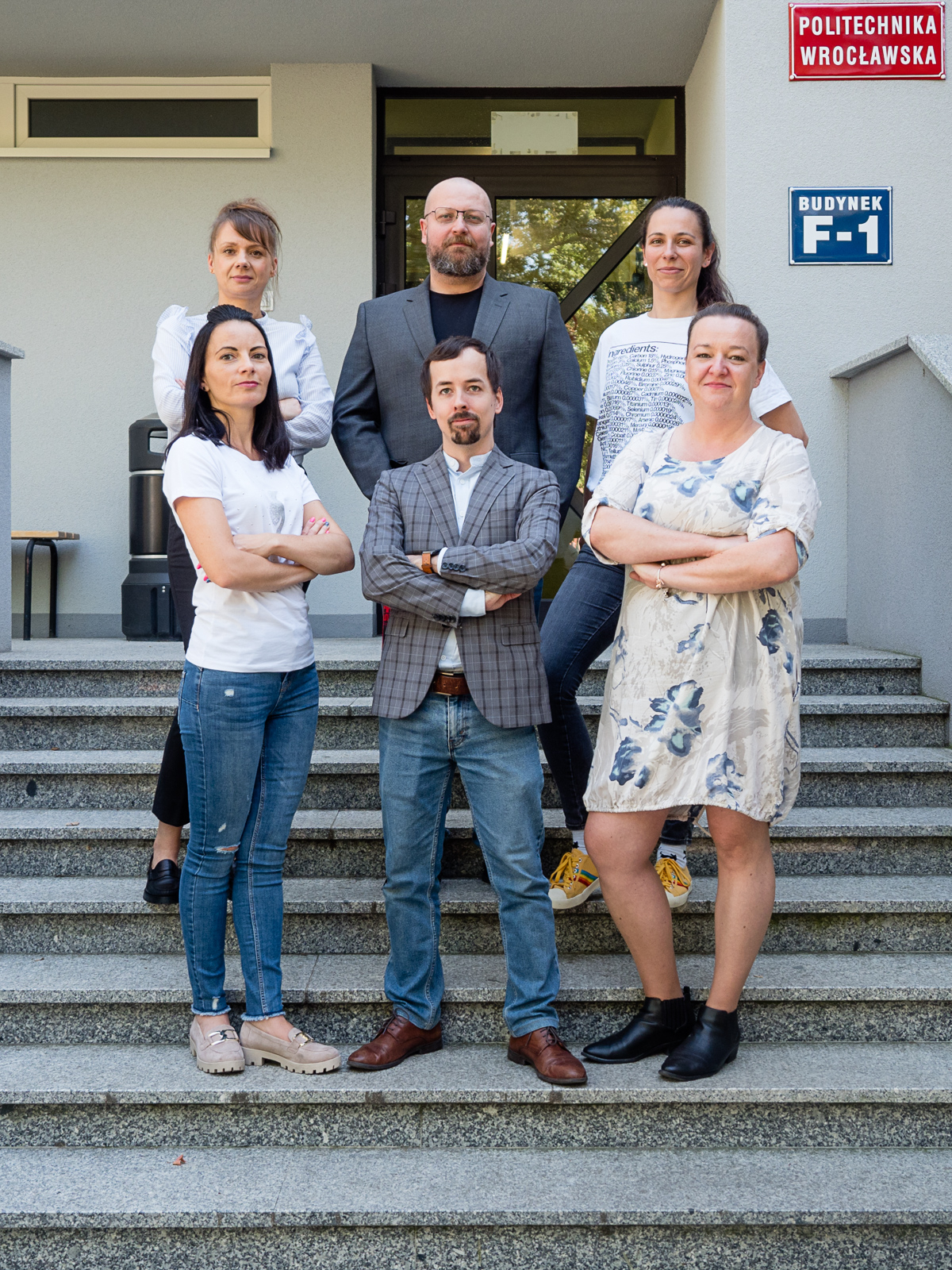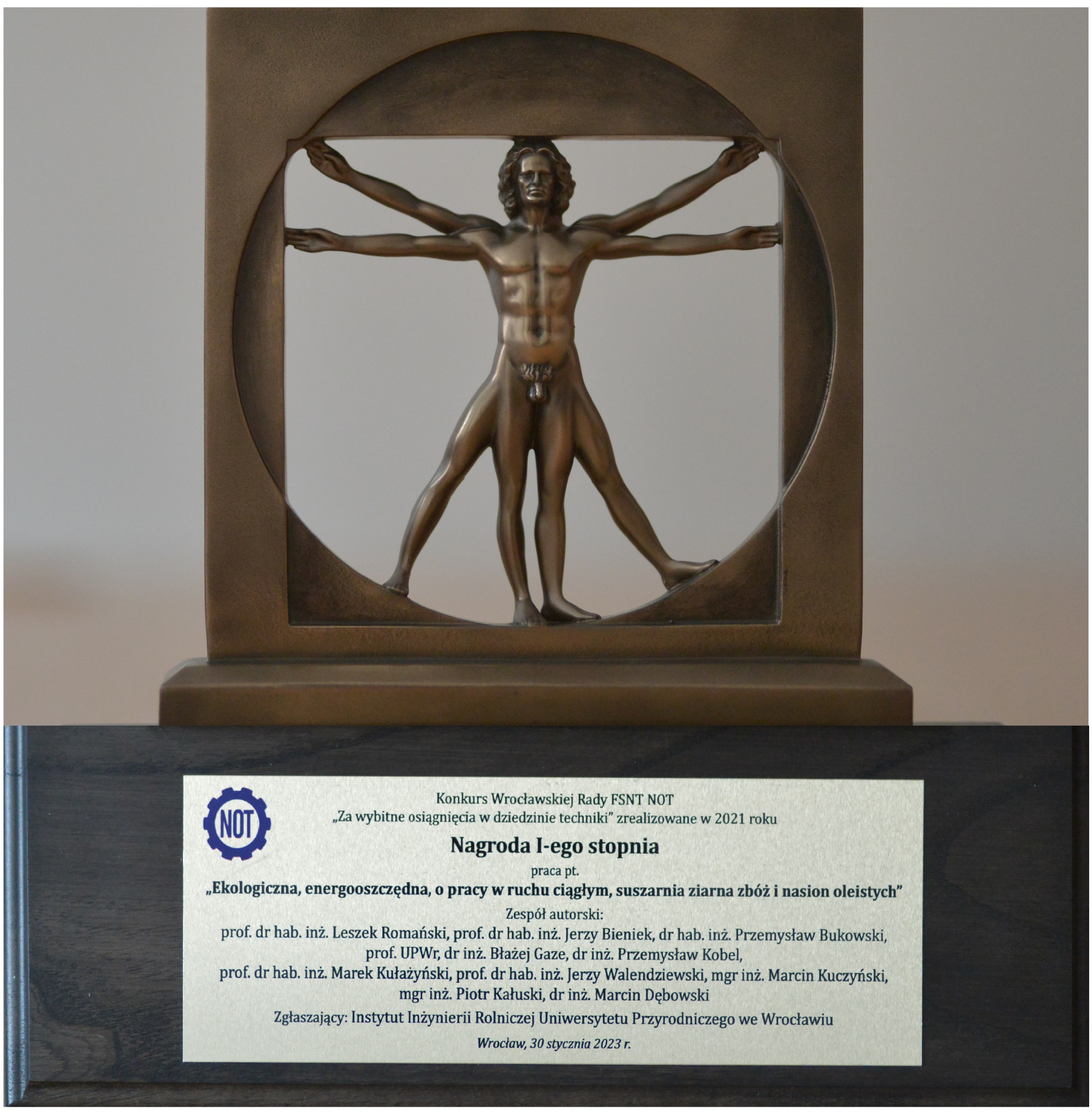YOUR BROWSER IS OUT-OF-DATE.
We have detected that you are using an outdated browser. Our service may not work properly for you. We recommend upgrading or switching to another browser.
The research group's area of activity focuses on heterogeneous catalysis, sorption processes and thermochemical conversion of waste to fuel fractions. Renewable energy sources and computer modeling of bioprocesses are also addressed.
 The obtained catalysts are analyzed using the following methods: phase analysis by XRD, characterization of the porous system by nitrogen sorption at 77 K, surface analysis by SEM/EDS, DSC, TPR-H2, TPD-NH3, TPD-CO2, spectroscopy UV-Vis-DR.
The obtained catalysts are analyzed using the following methods: phase analysis by XRD, characterization of the porous system by nitrogen sorption at 77 K, surface analysis by SEM/EDS, DSC, TPR-H2, TPD-NH3, TPD-CO2, spectroscopy UV-Vis-DR.
The work carried out on sorbents is aimed at improving existing and creating new sorption systems for wastewater/rainwater treatment and selective gas purification processes. The Group has experience in the preparation of activated carbons from coal and biomass. The prepared materials are analyzed for their porous structure, the presence of surface chemical groups (FT-IR spectroscopy), and characterization of their surfaces (SEM/EDS). The obtained sorbents are tested in static and dynamic adsorption systems, and their performance is evaluated using UV-Vis spectrophotometer, and chromatographic methods, including GC-MS and HPLC-UV analysis.

Thermochemical conversion of waste (biomass and industrial waste including, for example, waste polymers, automobile tire grinding) is carried out by non-catalytic and catalytic pyrolysis in a solid bed. The processes are aimed at producing liquid fuel fractions. Raw materials for the pyrolysis process are analyzed by the following methods: calorific value, chlorine/sulfur content, moisture content, volatile parts, ash, TGA. Analysis of the resulting liquid fractions includes their full characterization as potential fuel.
The team received on January 30, 2023, the 1st degree award of the Scientific and Technical Association (NOT) "For outstanding achievements in the field of technology" in the Competition of the Wroclaw FSNT NOT Council for the work "Ecological, energy-saving, with continuous operation, grain and oilseed dryer."
|
AREAS OF SCIENTIFIC ACTIVITY DEVELOPMENT OF MANUFACTURING METHODS AND CHARACTERIZATION OF INNOVATIVE CATALYSTS FOR PROCESSES: |
|
Catalytic processing of fuel fractions, including hydrogenation, hydrodesulfurization, hydroisomerization and hydrocracking processes; |
|
Photocatalysis, including photodegradation of selected wastewater pollutants, hydrogen production by photo-splitting of water; |
|
Obtaining biofuels, with particular emphasis on transesterification and hydrodeoxygenation (HVO/HEFA) processes of vegetable oils; |
|
Refining of ash liquids into stable fuel fractions; |
|
Steam reforming of alcohols to hydrogen; |
|
Modeling the course of energy processes, fuel and biofuel production |
Research offer
Contact:
e-mail: katarzyna.pstrowska@pwr.edu.pl
tel.: 71 320 63 62
| No. | Parameter | Determination method | According to the norm/standard |
| 1 | Moisture content | Dryer method | PN-EN 1860-2 PN-EN ISO 18134-3 PN-G-04511 ASTM D1762 ASTM E871 ASTM D3173 ASTM D6658 ASTM E1756 |
| 2 | Moisture content | Moisture analyzer | ASTM E1756 |
| 3 | Volatile content | PN-EN 1860-2 PN-G-04516 PN-EN ISO 18123 PN-EN ISO 22167 ASTM D1762 ASTM E872 ASTM D3175 |
|
| 4 | Ash content | PN-EN 1860-2 PN-ISO 1171 PN-EN ISO 18122 PN-EN ISO 21656 ASTM D1762 ASTM E1534 ASTM D3174 ASTM E1755 ASTM D6716 |
|
| 5 | Bound carbon content | PN-EN 1860-2 ISO 17246 ASTM E870 |
|
| 6 | Technical analysis (moisture, ash, volatile parts, bound carbon) | Thermogravimetric method (automatic analyzer) | PN-G-04560 ASTM D7582 |
| 7 | Heat of combustion analysis | Calorimetric bomb combustion method | PN-C-04375-2 |
| No. | Parameter | Determination method | According to the norm/standard |
| 1 | Density at 15°C | Method with aerometer | PN ISO 3675 |
| 2 | Fractional composition | Atmospheric distillation | EN ISO 3405 |
| 3 | Cetane index | EN ISO 4264 | |
| 4 | Water content | Distillation method | PN-EN ISO 9029 |
| 5 | Water content | Karl Fischer method | EN ISO 12937 |
| 6 | Flash point | Closed crucible method | EN ISO 2719 |
| 7 | Temperatura zapłonu | Open crucible method | PN-C-04008 |
| 8 | Reid's vapor pressure | EN 13016-1 | |
| 9 | Kinematic viscosity, 40, 100°C | EN ISO 3104 | |
| 10 | Viscosity index | PN-ISO 2909 | |
| 11 | Turbidity temperature | EN 23015 | |
| 12 | Cold filter blocking temperature | EN 116 | |
| 13 | Solid contaminant content | EN 12662 | |
| 14 | Corrosive effect on copper/aluminum | EN ISO 2160 | |
| 15 | Resin content | EN ISO 6246 | |
| 16 | Incineration residue | EN ISO 6245 | |
| 17 | Coking residue | EN ISO 10370 | |
| 18 | The reaction of the water extract | PN-C-04064 | |
| 19 | Aniline point | PN-C-04028 | |
| 20 | Solidification temperature | PN-C-04016 | |
| 21 | Acid number | PN-ISO 6618 | |
| 22 | FAME content of diesel fuel | Infrared spectrometry method | PN-EN 14078 |
| 23 | Analysis of the hydrocarbon group composition of light fuel fractions | Fluorescence Indicator Adsorption (FIA) | PN-EN 15553 |
| 24 | Group composition analysis of crude oils and heavy fractions; SARA analysis | Liquid column chromatography | ASTM 893-69 |
| 25 | Analysis of the composition of liquid hydrocarbon samples | Gas chromatography | - |
| 26 | Heat of combustion analysis | Calorimetric bomb combustion method | PN-C-04375-2 |
| 27 | Sulfur content | Wickbold's method of combustion | PN-EN 24260:2002 |
| 28 | Chlorine content | Wickbold's method of combustion | PN-EN 24260:2002 |
| No. | Parameter | Determination method | According to the norm/standard |
| 1 | Analysis of the composition of hydrocarbon gases (natural gas, biogas) | Gas chromatography | PN-EN ISO 6975:2010 |
| 2 | Calculation of calorific values, density, relative density and Wobbe number from gas composition | PN-EN ISO 6976:2016 |
| No. | Parameter | Determination method | According to the norm/standard |
| 1 | Cone penetration | PN-ISO 2137 | |
| 2 | Cone penetration at low temperatures (1—40°C) | PN-ISO 2137 | |
| 3 | Cone penetration after kneading | PN-ISO 2137 | |
| 4 | Oil separation | PN-EN 60811-5-1 | |
| 5 | Volatility/vaporization | Method 608 | EN 187000 |
| 6 | Drip temperature | PN-EN 60811-5-1 | |
| 7 | Corrosive effect on copper and aluminum | EN ISO 2160 | |
| 8 | Content of drawing substances | PN-C-04142 |
| No. | Parameter | Determination method | According to the norm/standard |
| 1 | Needle penetration | PN-EN 1426 | |
| 2 | Softening temperature | PN-EN 1427 | |
| 3 | Flash point | PN-C-04008 |
| No. | Parameter | Determination method | According to the norm/standard |
| 1 | Moisture content | Dryer method | PN-EN 12915 ASTM D2867 |
| 2 | Volatile content | PN-EN 12915 ASTM D5832 |
|
| 3 | Ash content | PN-EN 12195 ASTM D2866 |
|
| 4 | Bound carbon content | PN-EN 12195 ASTM E870 |
|
| 5 | Moistability | PN-EN 12195 | |
| 6 | Content of water-soluble substances | PN-EN 12195 |
| No. | Parameter | Determination method | According to the norm/standard |
| 1 | Contaminants insoluble in fat | PN-EN ISO 663 | |
| 2 | Unsaponifiable substances | PN-EN ISO 3596 |
| No. | Parameter | Determination method | According to the norm/standard |
| 1 | Hexane extract wet white/wet blue (fat content) | ASTM D7674 |